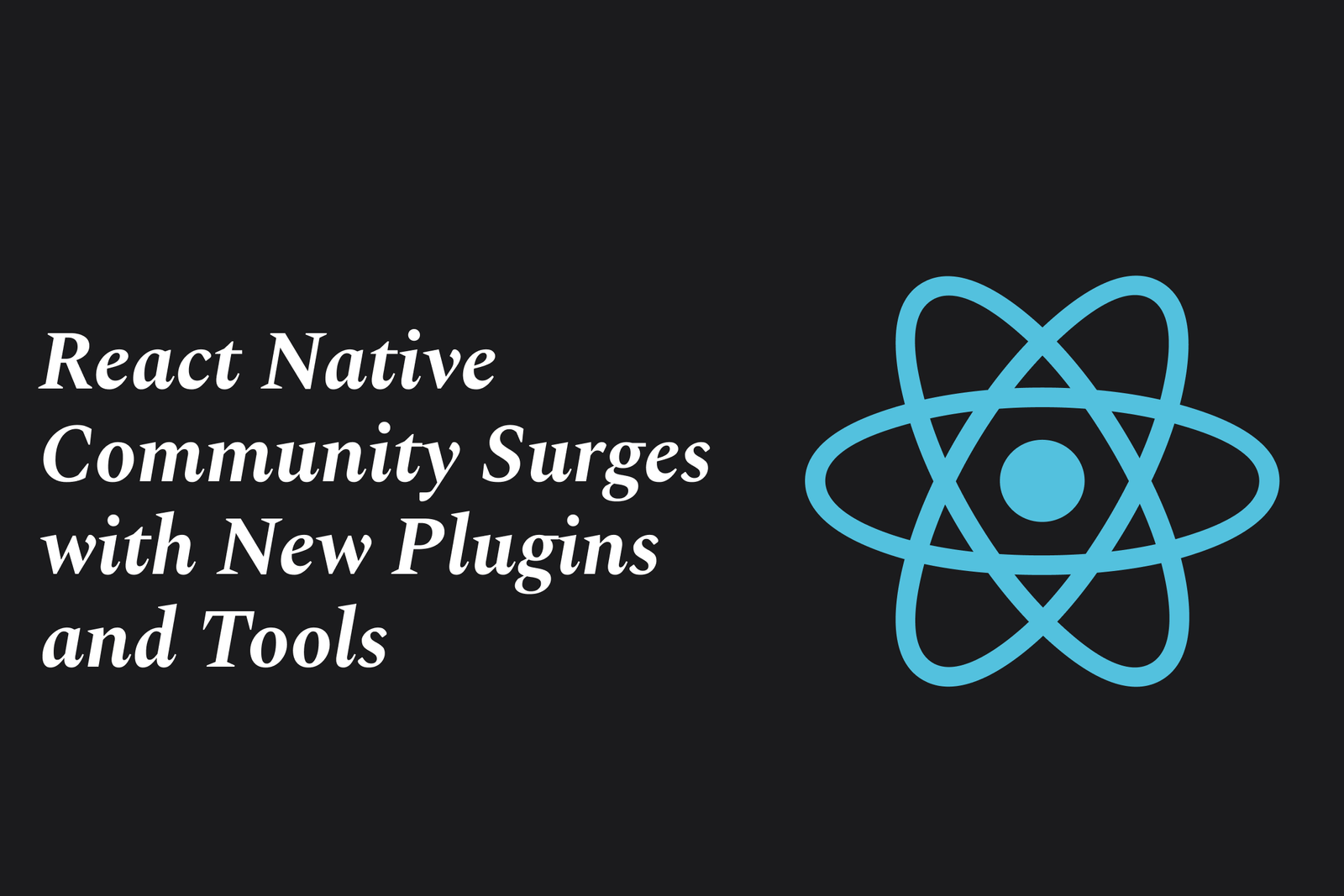React Native COMMUNITY Surges with New Plugins and Tools
The React Native community is rapidly expanding with a wave of new plugins and tools that boost app performance, simplify development, and enhance debugging. These innovations empower developers to build faster, smoother, and more feature-rich cross-platform apps than ever before.
React Native Community Surges with New Plugins and Tools
1 ) Introduction: Growth and Opportunities in 2025
React Native has significantly evolved since 2015, becoming a more powerful and efficient framework for cross platform app development.
The year 2025 marks a pivotal moment with enhanced architecture, improved tools, and broader industry adoption.
Major companies like Shopify, Microsoft, and Meta endorse React Native, highlighting its enterprise viability.
2 ) The New Architecture: Fabric and TurboModules
React Native's core architecture has undergone a major overhaul with two critical components:
Fabric: A faster and more flexible rendering system that enhances UI updates, delivering a native like, smooth, and efficient user experience.
TurboModules: Redesigned module loading that boosts app startup speed, reduces weight, and supports scalability.
Benefits include fewer performance bottlenecks, multi threaded rendering, smooth animations, and better support for advanced app features such as augmented reality and media heavy applications.
3 ) Enhanced Debugging Experience
React Native 2025 introduces upgraded developer tools facilitating easier, faster debugging.
Features include component tree inspection, prop analysis, breakpoints, and network monitoring.
Integration with tools like Reactotron, native iOS/Android dev tools, and Expo DevTool Plugins streamlines problem solving.
Debugging has shifted from a painful task to a seamless part of app development.
4 ) Expo's Evolution: Simplifying React Native Development
Expo has matured to become the recommended platform for React Native development.
Key advantages:
Eliminates complex setup, enabling developers to start coding quickly without native module headaches.
EAS Build and Submit simplify building and deploying production ready apps to app stores.
Supports custom native modules via the bare workflow and Prebuild.
Includes Expo Router for file based routing, easing transition for web developers.
Enterprise adoption of Expo demonstrates its robustness beyond being a mere stepping stone.
5 ) Conclusion: React Native's Bright Future
The React Native ecosystem is thriving with innovative plugins and tools that accelerate development and improve app quality.
The combination of the New Architecture, superior debugging tools, and Expo’s accessibility positions React Native as the leading framework for cross platform mobile development in 2025 and beyond.
For developers hesitant to adopt, this is the optimal time to leverage React Native’s advancements to build faster, smarter, and scalable apps.
https://justacademy.in/news-detail/android-app-modularization-trends
https://justacademy.in/news-detail/react-native-and-ai-integration-for-smarter-apps
https://justacademy.in/news-detail/flutter-+-gemini-ai-integration-tutorial
https://justacademy.in/news-detail/latest-android-camera-app-innovations
https://justacademy.in/news-detail/android-malware-protection-improvements
Related Posts
Java supports GDPR and data privacy by enabling secure data handling through encryption, controlled access, and precise data management. It allows developers to minimize PII exposure, ensure data confidentiality, and design workflows that comply with data protection regulations effectively.
Java code quality tools have evolved to include advanced static analysis, integrated security checks, and AI-powered code reviews. These updates help developers detect bugs, enforce coding standards, and enhance security, streamlining the development process and improving overall code reliability.
Java remains a cornerstone in big tech companies, evolving with modern features like records, pattern matching, and virtual threads. Its robust ecosystem, enhanced performance, and growing AI integrations keep it vital for both legacy systems and innovative new projects.
Java and CI/CD pipeline optimizations streamline Java application development by automating builds, tests, and deployments. They improve efficiency through parallelization, caching, and secure secrets management, enabling faster feedback loops and more reliable, scalable software delivery.
Java supports modern cryptography standards through its flexible Java Cryptography Architecture (JCA), enabling integration of advanced algorithms like AES, EdDSA, and post-quantum tools. Libraries like Bouncy Castle offer FIPS-certified, hardware-accelerated implementations for secure development.
Java 23 enhances record patterns by enabling concise, direct destructuring of record components within pattern matching, simplifying type checks and data extraction. This improvement boosts code readability and expressiveness by reducing boilerplate in handling immutable data classes.
Java remains a top choice for mobile app backends, powering scalable, secure, and high-performance server-side solutions. Latest trends include cloud-native microservices, reactive programming, and enhanced JVM optimizations, enabling efficient, flexible, and robust mobile backend development.
Java SE 24 and LTS Java SE 21 offer enhanced features and performance, while Apache Spark 4.0.0 introduces Scala 2.13 support and advanced ML and SQL capabilities. Together, they empower developers to build scalable, high-performance data applications with modern tools.
JUnit 5 modernizes Java testing with a modular architecture, improved assertions, and seamless Java 8+ support. Beyond JUnit, tools like Mockito and AssertJ enhance mocking and assertions, creating a powerful, flexible ecosystem for writing clean, efficient Java unit tests.
Java plays a pivotal role in cloud automation tools by providing a robust, platform-independent language used to build scalable automation frameworks like Jenkins and Selenium, enabling efficient CI/CD pipelines, testing, and orchestration across diverse cloud environments.










